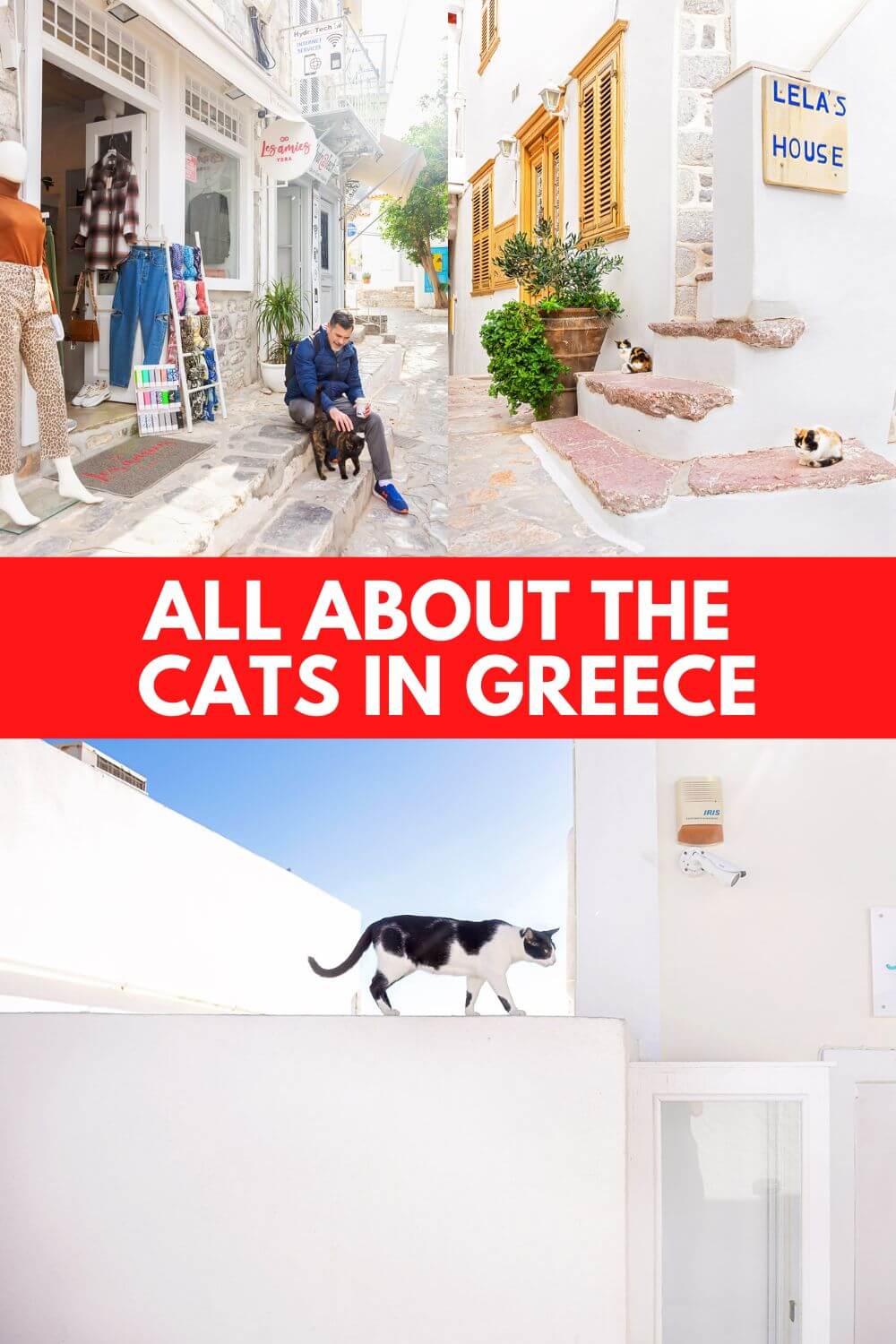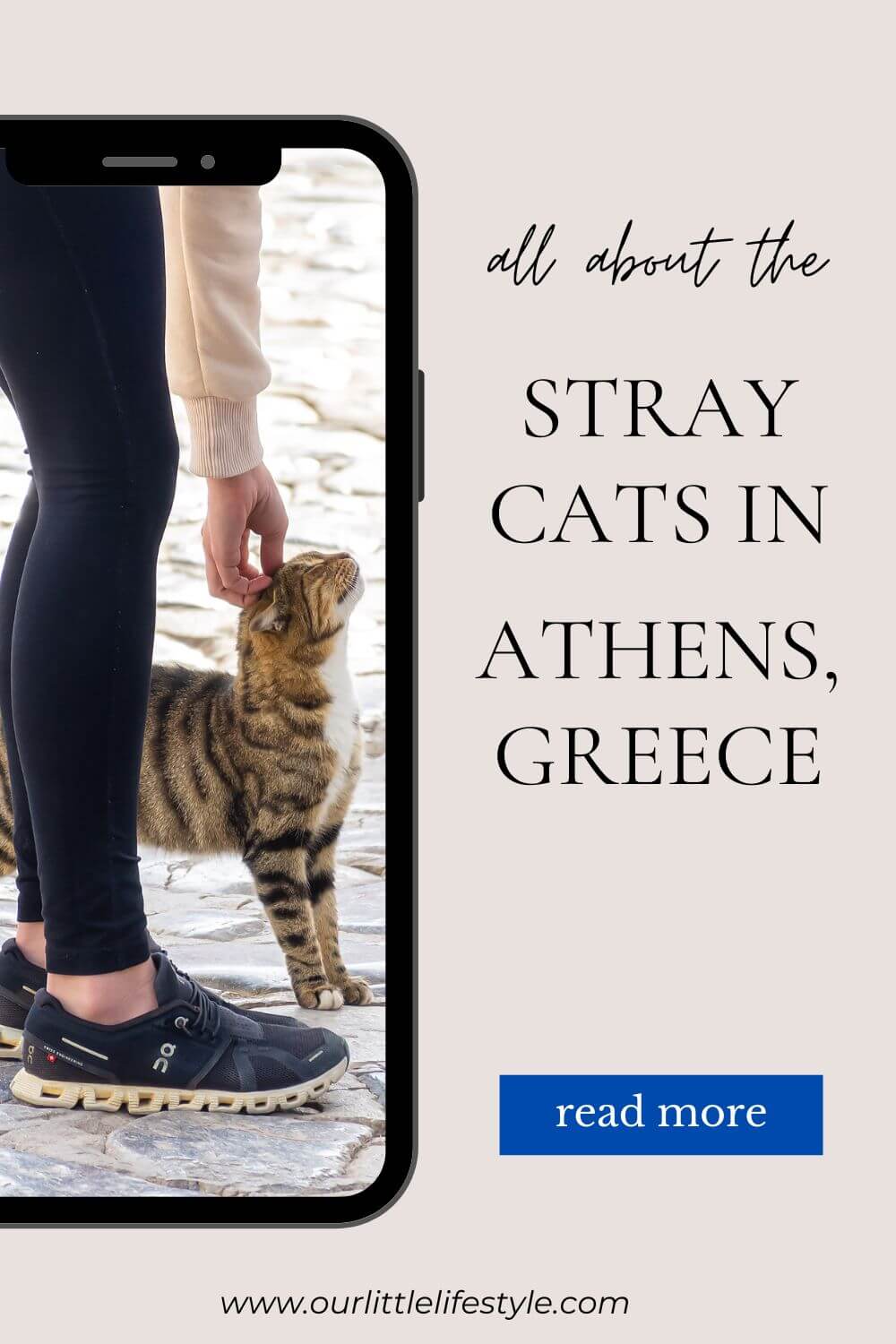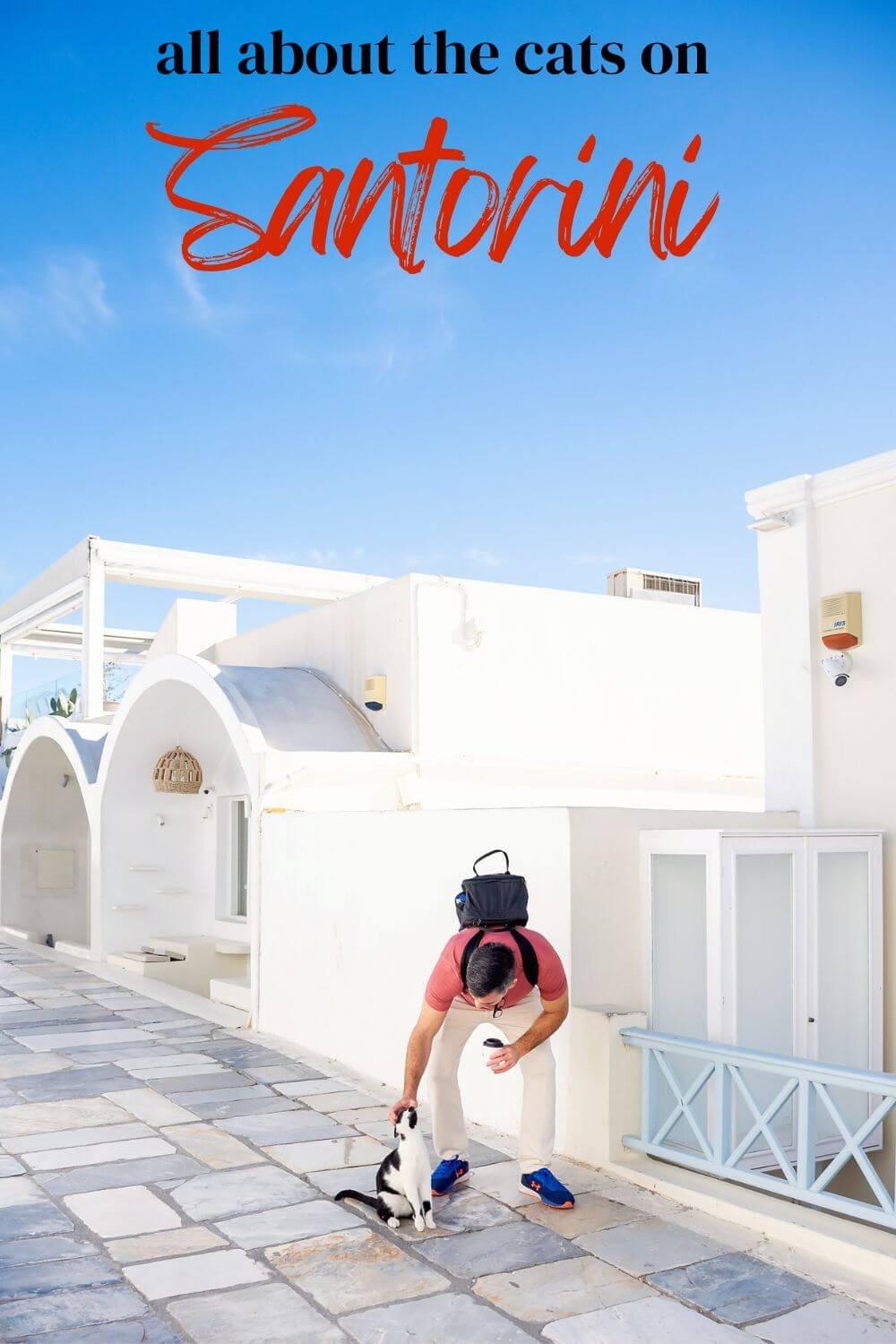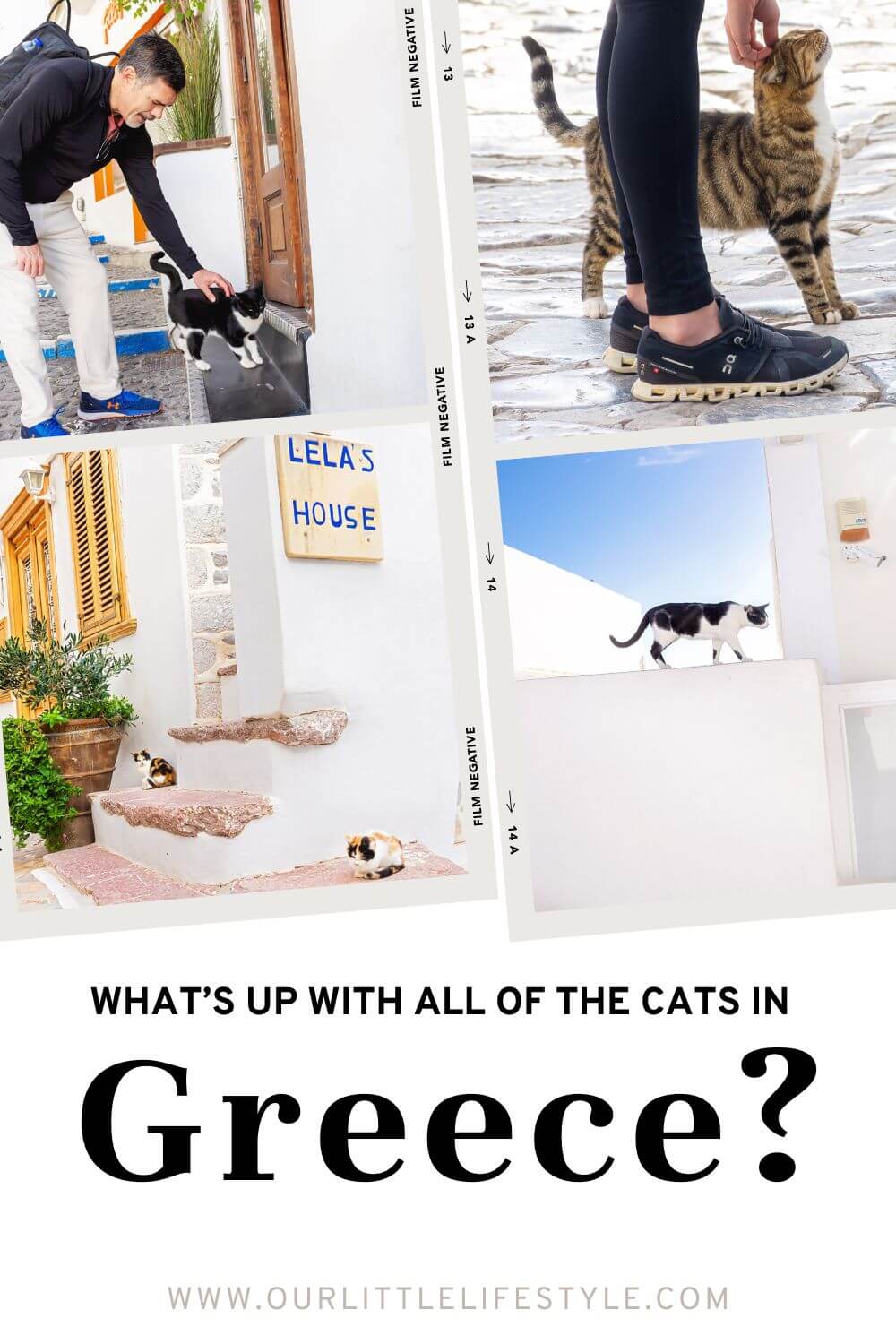We may earn money or products from the companies mentioned in this post. As an Amazon Associate, I earn from qualifying purchases.
Our family took a wonderful trip to Greece last year. It was truly a bucket-list opportunity to see this amazing country, at once steeped in ancient history and brimming with modern charm. We spent four days in downtown Athens, at the base of the Acropolis. We loved our charming two-bedroom Plaka rental apartment. Another surprising highlight for our family was seeing all the cats in Athens.
We were amazed to see many stray cats living throughout the city while traveling in and around Athens. As cat lovers, we enjoyed watching them, petting them, and encountering them surreptitiously as we roamed the city streets. These feline friends have made their homes in the city’s ancient ruins, bustling markets, and quaint neighborhoods.
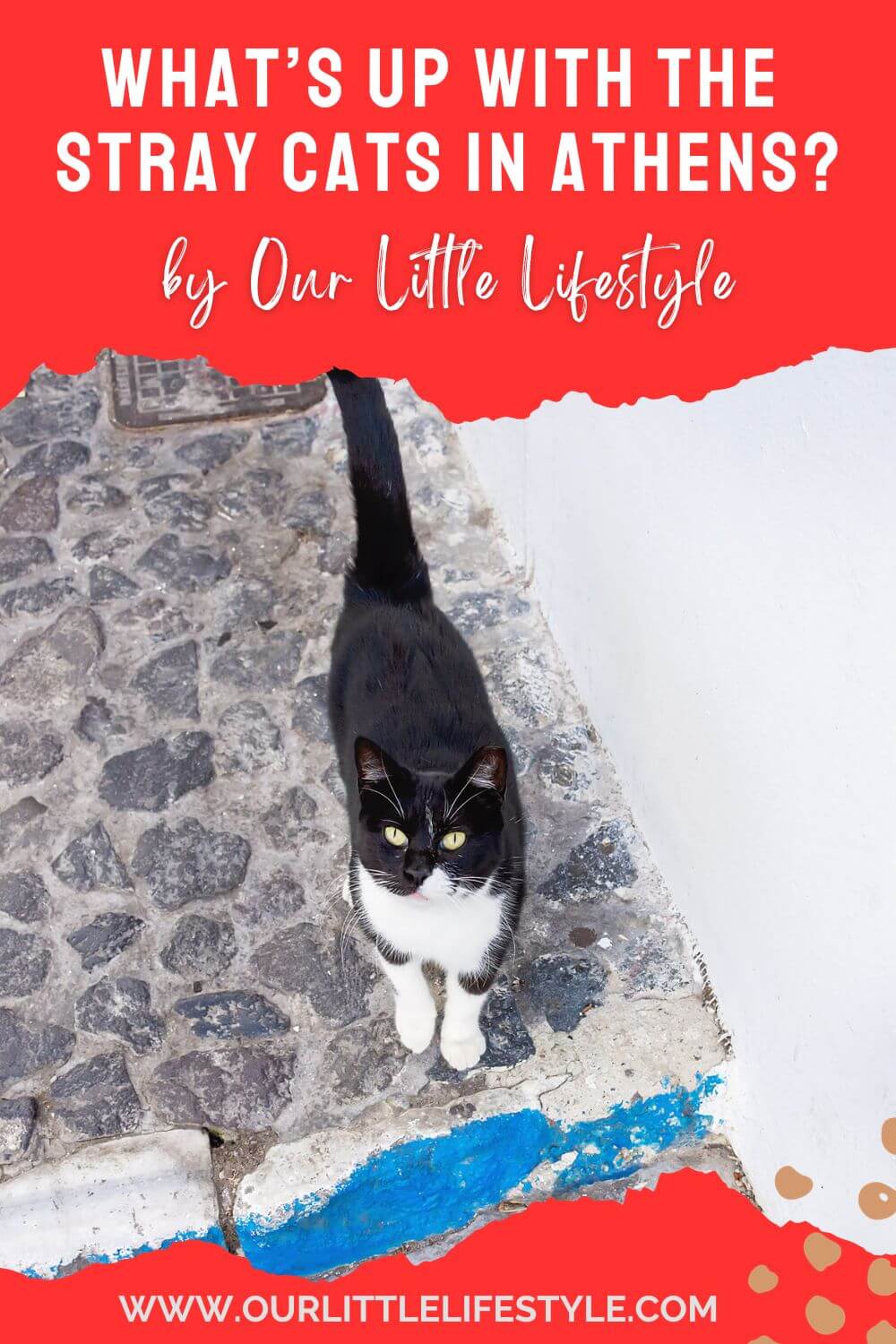
Cats in Athens and Greece
Cats have become an integral part of the city’s landscape. They are home on the busy streets, along the music-filled squares, and in the ancient agoras in Athens. As you wander through the city, you’ll find them perched on the steps of the Acropolis, lounging in the shade of olive trees, or playfully chasing one another through narrow cobblestone alleys.
Athens isn’t the only city in Greece with a thriving cat population. Nearby towns like Piraeus, Kifissia, and island destinations like Mykonos and Santorini also have many strays. In fact, we saw so many personally while visiting Oia and encountered the most adorable kittens on the island of Hydra!
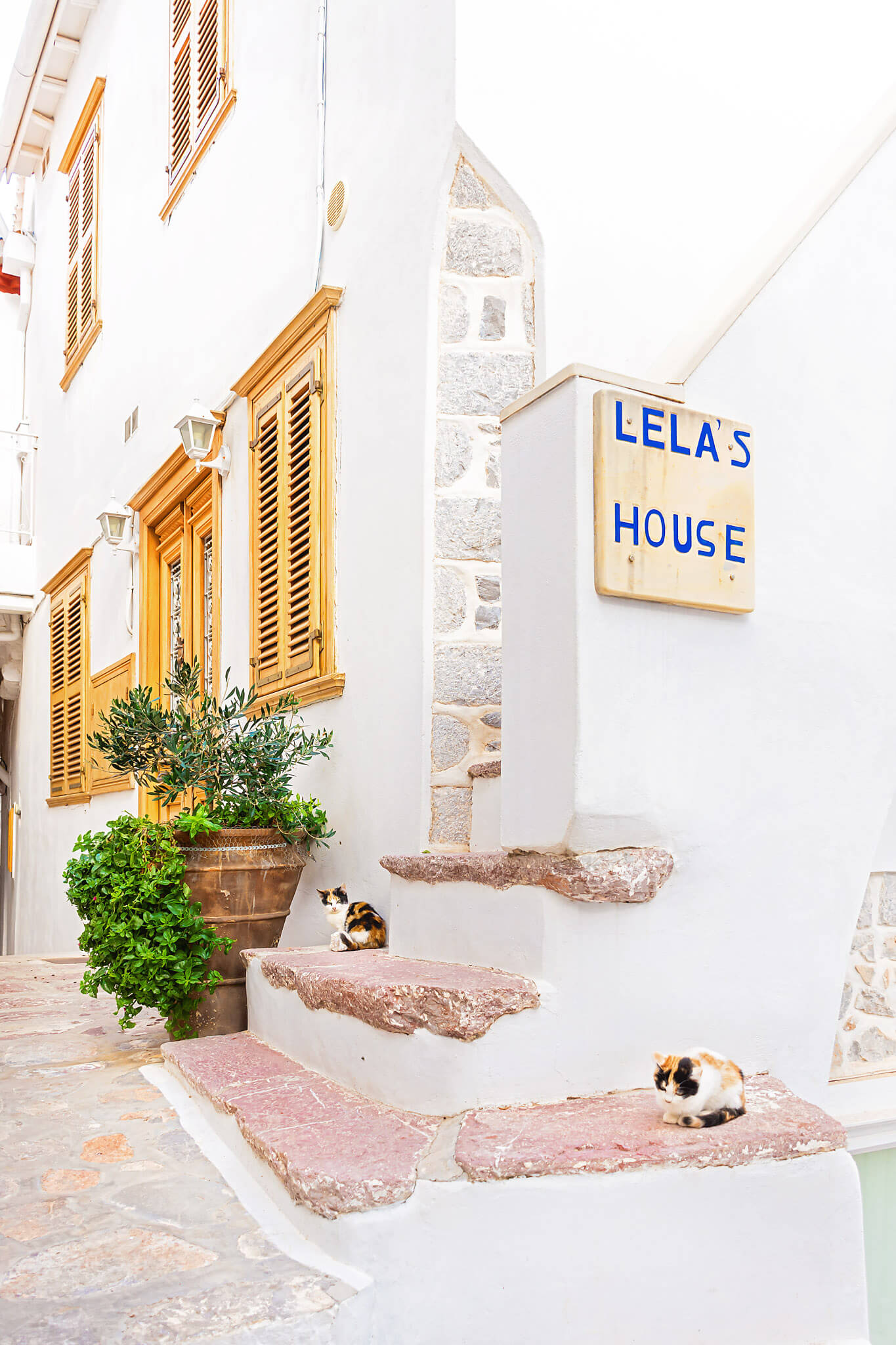
If you aren’t a cat lover like us, you may wonder why we enjoyed seeing the cats in Athens on this trip so much. Regardless, understanding these cats and their history is essential if you’re an animal lover or simply curious about the situation.
Why Are There Stray Cats in Athens, Greece?
Cats have been a part of Greek culture for centuries, with their presence in Athens dating back to ancient times. Additionally, the warm Mediterranean climate, abundant food sources, and hospitable urban environment have made Athens a haven for felines. Cats were often considered symbols of good luck and protectors against evil spirits, which may have contributed to their acceptance and proliferation in the city.
Historically, cats have been appreciated for their hunting skills, keeping granaries free from rodents, and ability to control pests. Over time, their presence became more entrenched in the city’s fabric, with many residents and visitors embracing them.
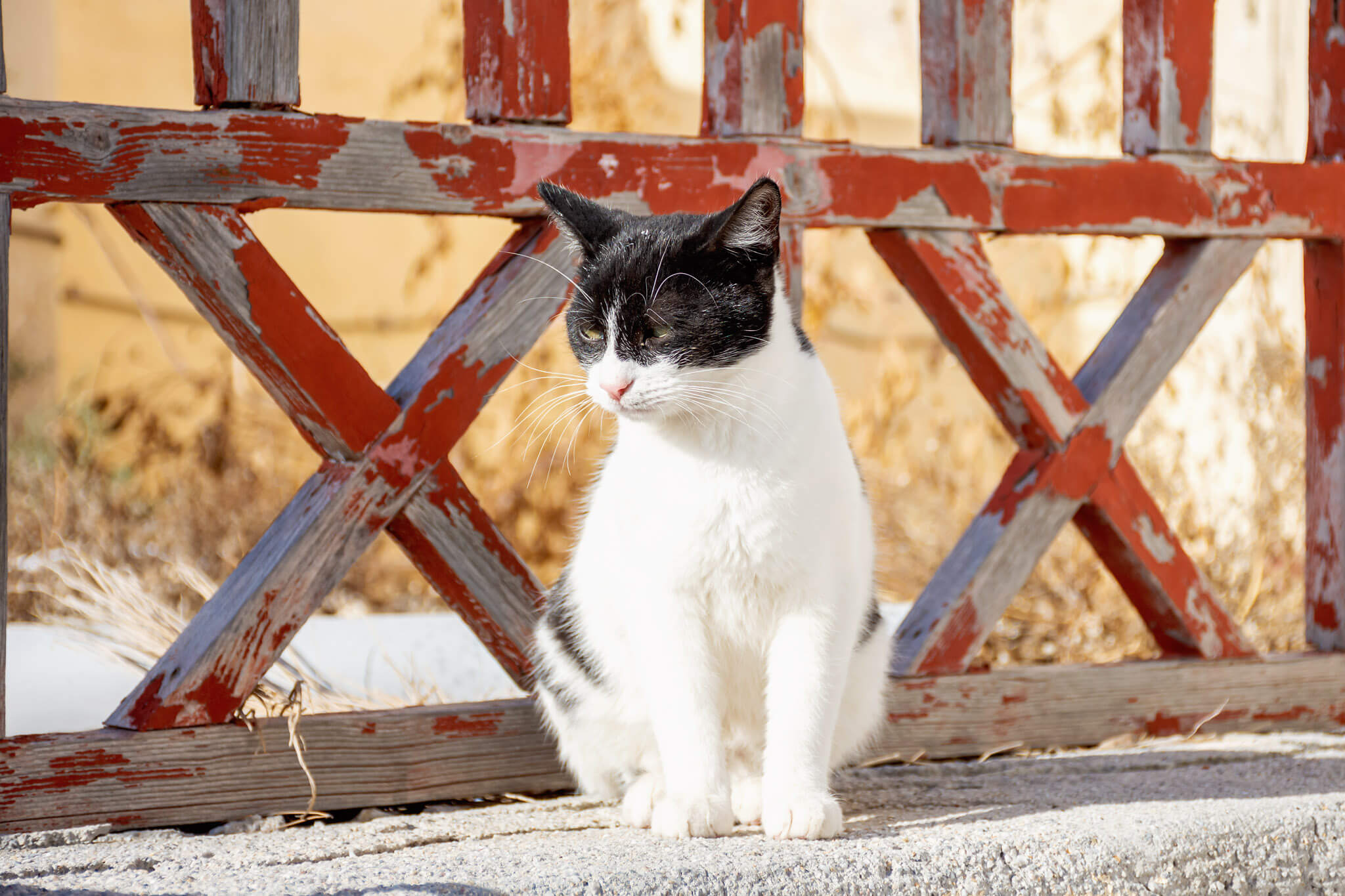
Why Are There So Many Cats in Athens?
There are several reasons for the large number of stray cats in Athens. The warm climate allows year-round breeding, leading to a constant influx of kittens. A lack of adequate spaying and neutering practices is a known issue for the Athenian government, and they are trying to escalate efforts.
The city’s layout has many narrow streets, alleyways, and ruins. These provide hiding spots and shelter for cats, ensuring their survival in the urban landscape. Female cats can give birth two or three times per year. Each litter consists of around 4-8 kittens. This means cat populations can grow quickly without widespread spay and neutering programs.
Overpopulation stresses the fragile coexistence of cats with humanity, giving rise to social, health, and welfare problems. However, numerous charitable organizations have stepped up to address these concerns and ensure the cats remain a balanced part of Athens’ identity. I discuss some of these charities later in this post.
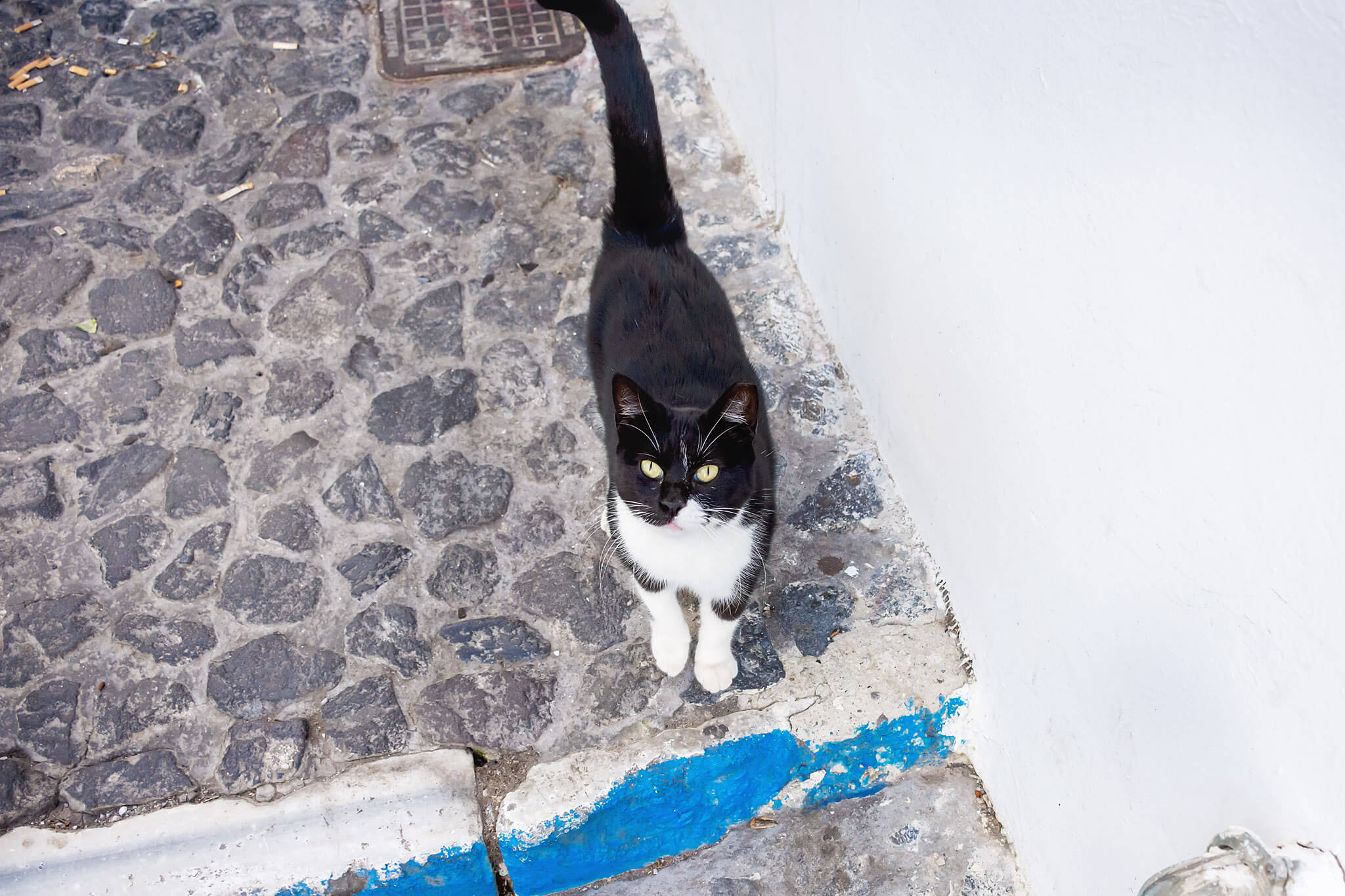
Should I Pet The Stray Cats in Athens?
While it’s tempting to shower every cat you encounter affectionately, it’s important to remember that not all stray cats in Athens are friendly. Some may be feral or carry diseases, so you’ll want to approach them cautiously and observe their body language.
If a cat appears receptive to your presence, gently pet them if they seem comfortable. Remember that you’re in their territory, so be respectful and maintain a safe distance when interacting with them. Washing your hands thoroughly after petting stray cats is also crucial to minimize any risk of transmitting diseases.
On the other hand, if a cat seems anxious or aggressive, it’s best to give them space and admire them from a distance. You can ensure a positive and respectful encounter by being mindful of each cat’s unique personality and boundaries.
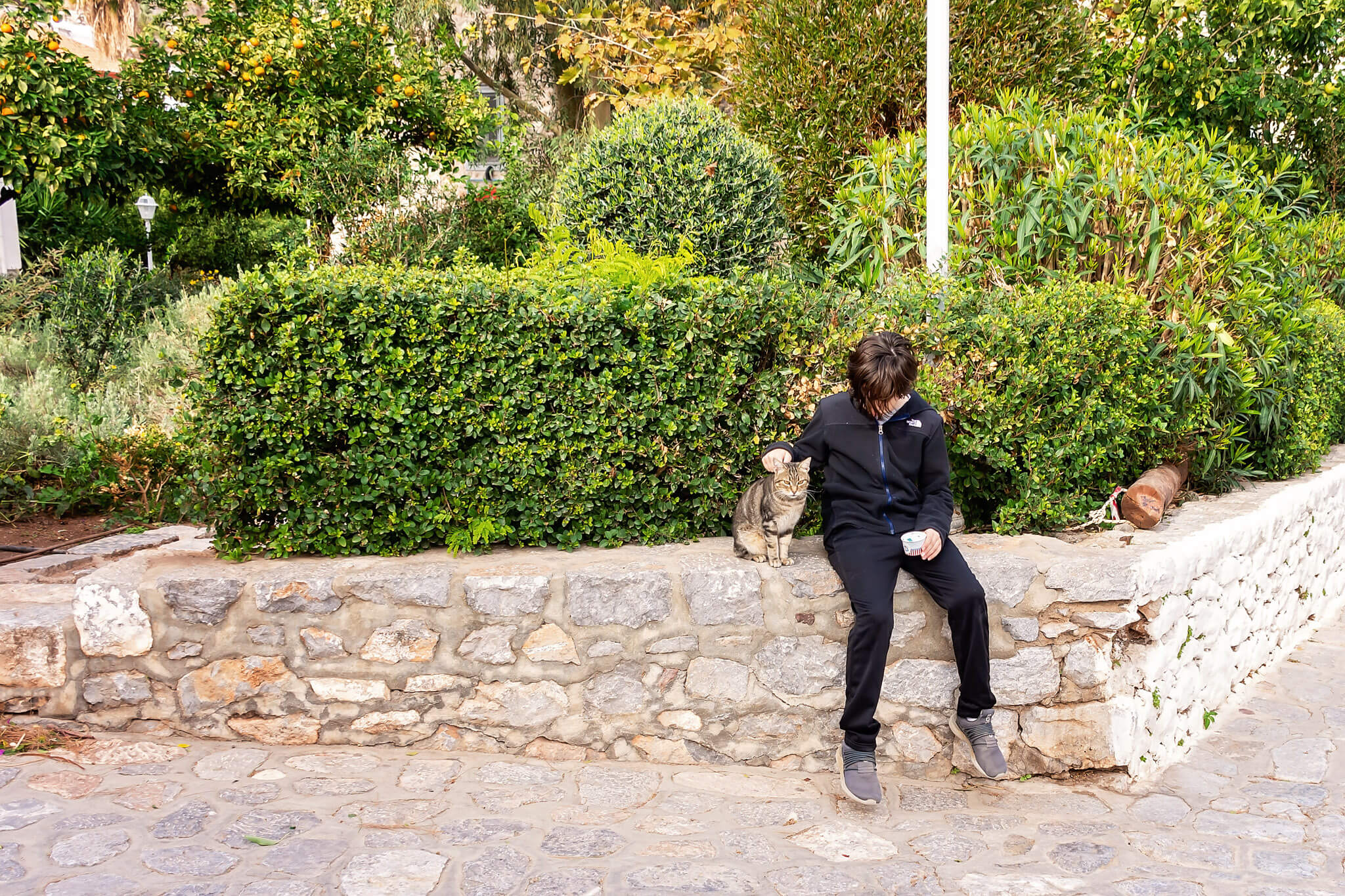
The Difference Between Stray, Feral, and Domesticated Cats
Understanding the difference between stray, feral, and domesticated cats will give an idea of how to approach or help them.
What Are Stray Cats?
Stray cats are typically abandoned or lost pets, often friendly and accustomed to human interaction. They might approach people for food, attention, or shelter. They can sometimes be distinguished by their collar or well-groomed appearance.
What Are Feral Cats?
On the other hand, feral cats have little to no contact with humans and may be aggressive if approached. They are usually born in the wild and have not been socialized with people, making them more wary. Feral cats are also more likely to form colonies, living and hunting in urban spaces.
Many of the cats in Greece fall into the feral category. You’ll see them organized into colonies, living together in groups of a few to dozens of cats.
Common Domesticated Cats
Domesticated cats are pets living with their owners, so it’s crucial not to confuse them with strays. These cats may be allowed to roam freely. Still, they will usually have a collar, identification tag, or microchip to signify their status as a pet.
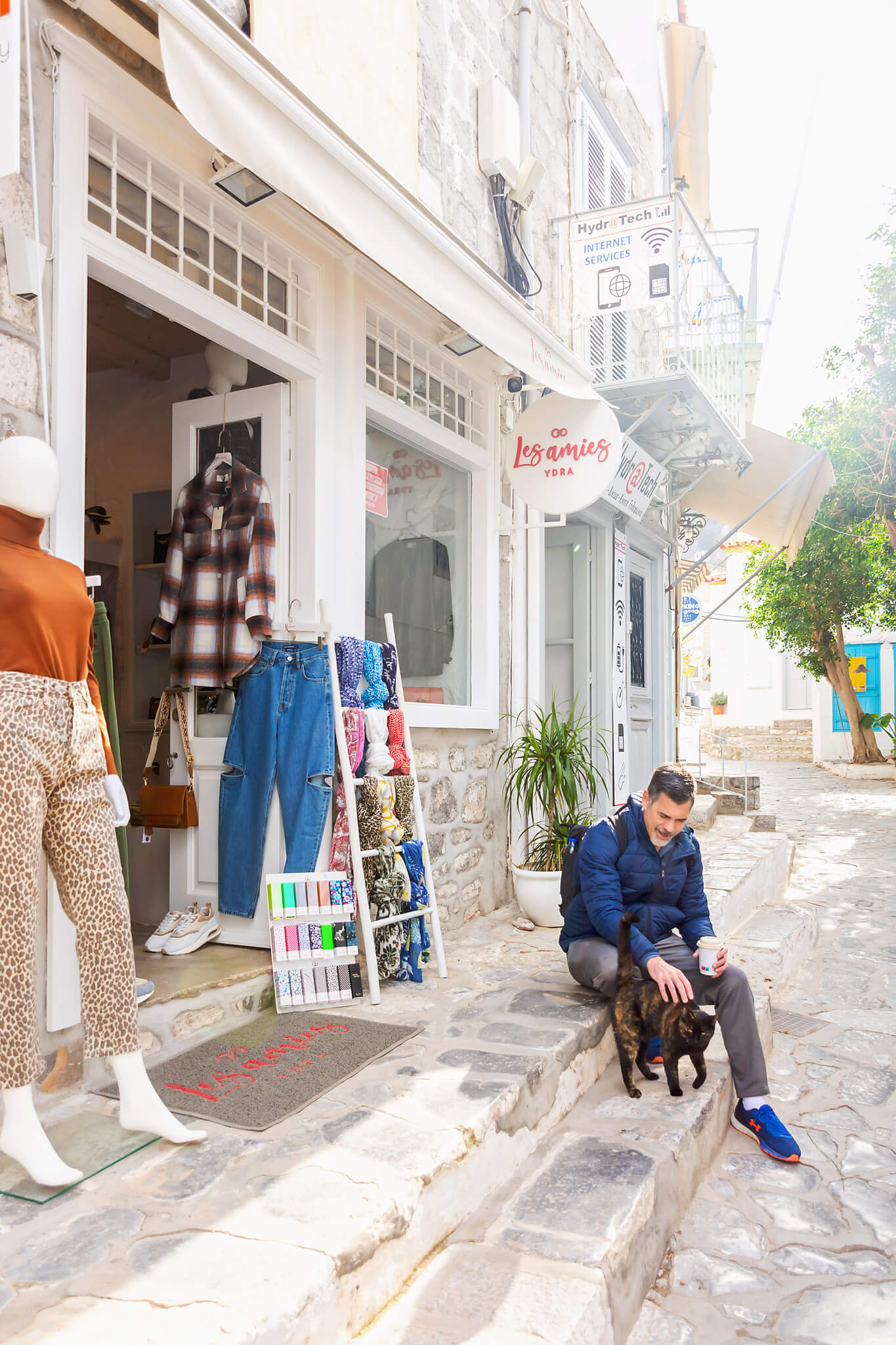

What Cat Breeds Live In Athens?
The streets of Athens are home to a diverse mix of feline breeds. By far, the most common is the Aegean cat. With their striking appearance, including a lean body, large eyes, and triangular-shaped head, this breed is believed to have originated from the Cyclades Islands in the Aegean Sea.
This species probably originated several millennia ago. Evidence discovered by archaeologists suggests that the first domesticated cats resided on the island of Cyprus, near Greece, around 10,000 years ago.
It is plausible that over time, some of these cats migrated to Greece, possibly aboard fishing or trading vessels. There, they were likely appreciated for their mousing skills. The Aegean cat may also have a common lineage with Turkish cat breeds, such as the Angora.
Despite being among the oldest breeds globally, Aegean cats were not recognized as a distinct breed until the 1990s. Aegean cats have a semi-long-haired coat, typically featuring two or three colors and almond-shaped eyes. They have an affinity for water and are very social. Their short, water-repellent coats and muscular bodies make them well-suited for life in Greece’s coastal cities.
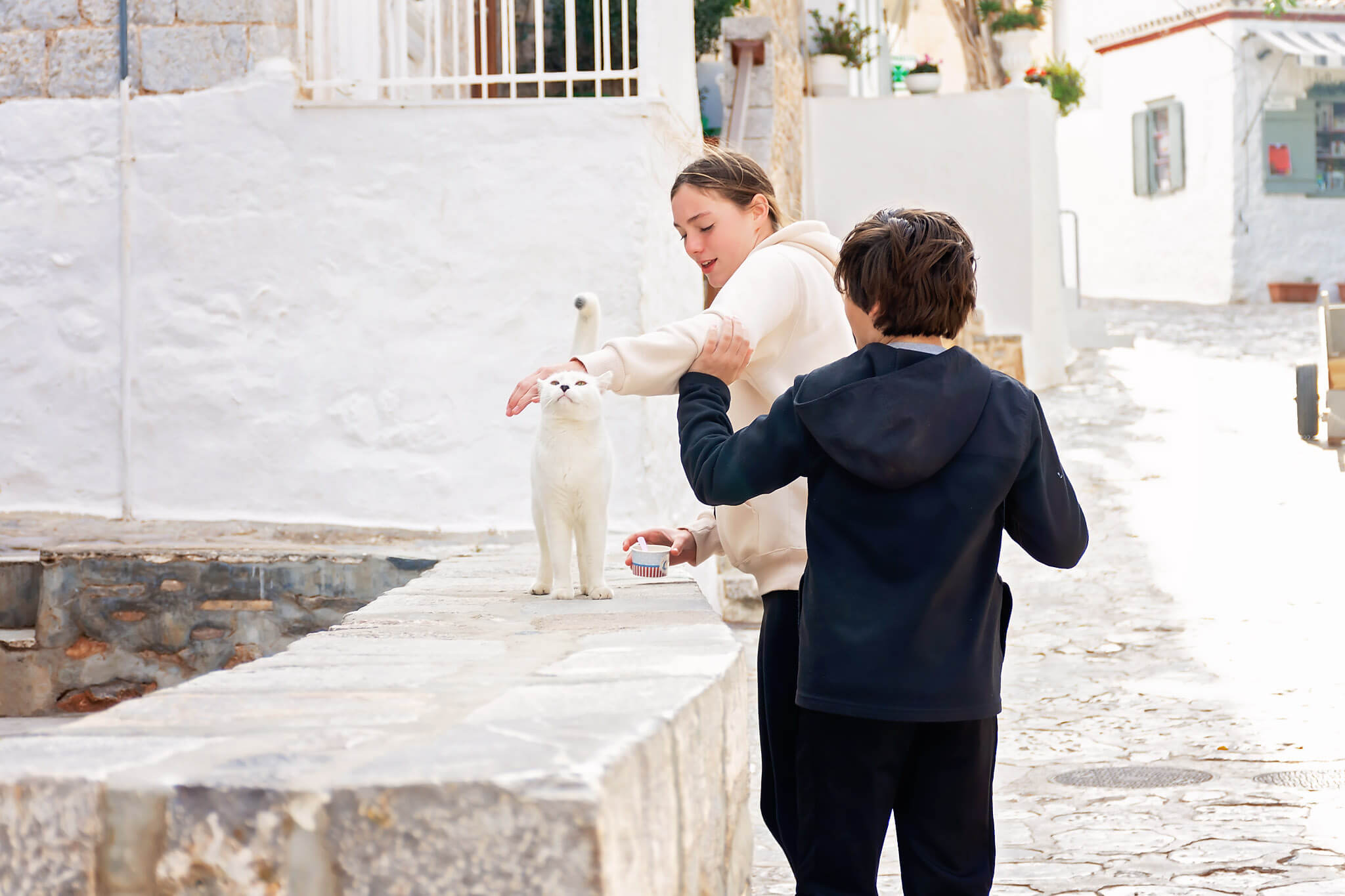
Take a Cat Tour In Athens
If you want to immerse yourself in the world of Athens’ stray cats, various cat tours are available. These guided walks take you through the city’s famous sites and hidden gems, showcasing the cats that call these places home. Not only will you learn about the history and culture of Athens, but you’ll also get a chance to interact with the cats and snap some cute photos.
Cats of Acropolis Top Rated Tour on Airbnb Experiences
Self-guided Virtual Tour of the Cats of Athens on TripAdvisor
Cats of Athens: Self-Guided Mobile Tour in Plaka via Get Your Guide
Some tours also collaborate with local cat welfare organizations, providing a portion of their proceeds to support these groups’ efforts in caring for the city’s feline population. By joining a cat tour, you’ll have a memorable experience and also contribute to the ongoing efforts by local charities to protect and feed the feral cat population.
The Aegean Islands and Their Cats
The population of Greece’s stray cats is not limited to Athens. The Aegean Islands, renowned for their breathtaking beauty and rich history, are also home to a thriving feline population. Cats can be found in nearly every corner of these idyllic islands, from the whitewashed villages of Hydra to the bustling port towns of Mykonos.
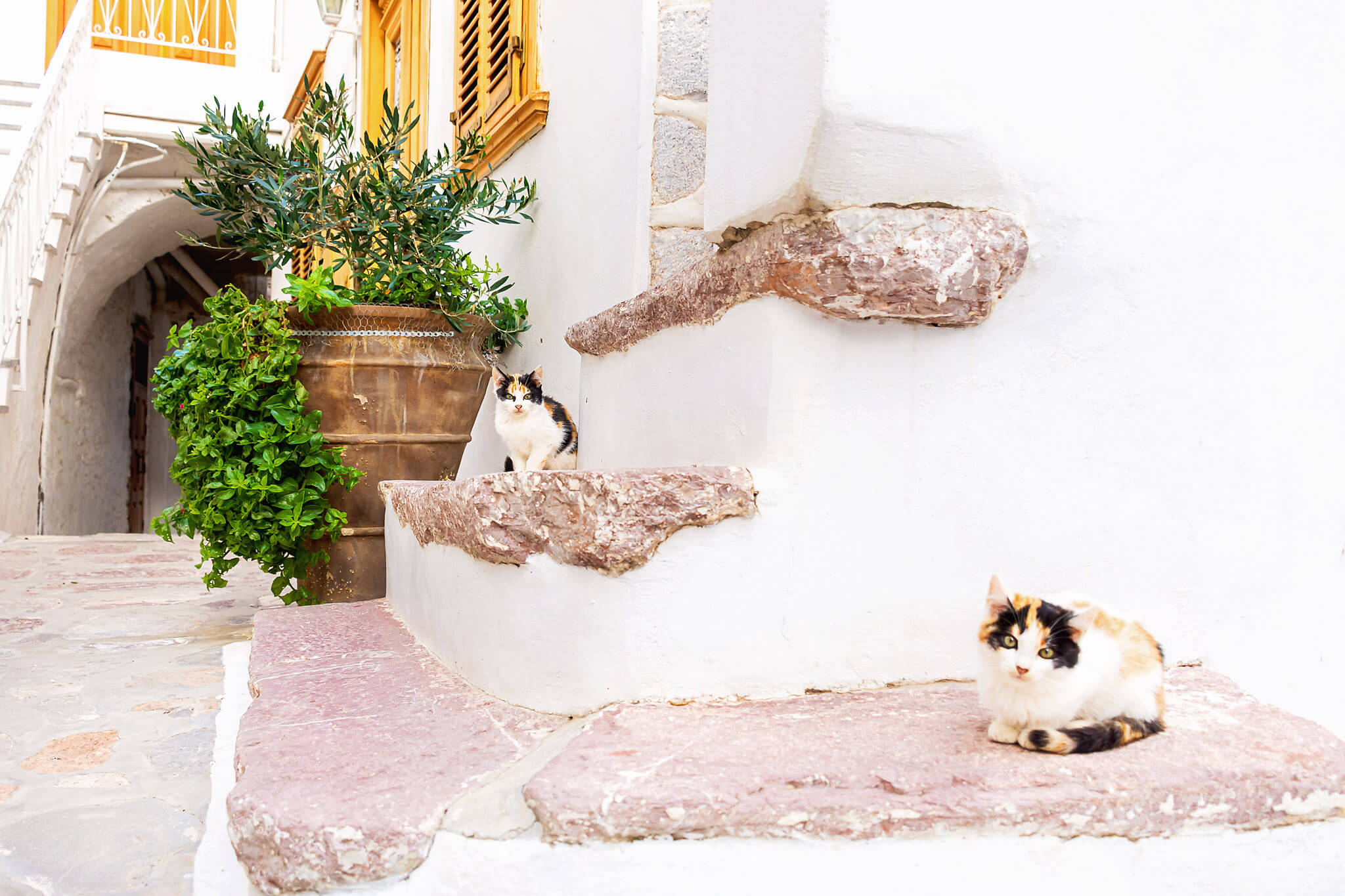
Island cats have adapted well to their surroundings, benefiting from the abundant food sources provided by the local fishing industry and the island’s warm, hospitable climate. In many cases, the local communities have embraced them, with some setting up feeding stations and providing shelters.
On the island of Santorini, we saw so many cats! We had fun petting them as we walked the picturesque streets weaved into the city bluffs. They were incredibly friendly, and just about every one of the shops had a resident cat (or three!) perched on a chair or lying lazily on the floor.

The Ancient History of Cats In Greece
The connection between cats and Athens dates back to ancient times when the city was a thriving center of trade and culture. Cats were highly valued for their hunting skills, keeping granaries free from rodents and protecting homes from pests.
The ancient Greeks admired cats for their grace, agility, and independence, often associating them with gods and goddesses. Initially, the weasel was believed to be the best animal for hunting mice and rats, and they were widely kept as pets for that purpose. Later, cats became recognized as superior hunters and supplanted weasels as the pet of choice. Likely, the Phoenicians first brought domestic cats to Greece in the fifth century BC.
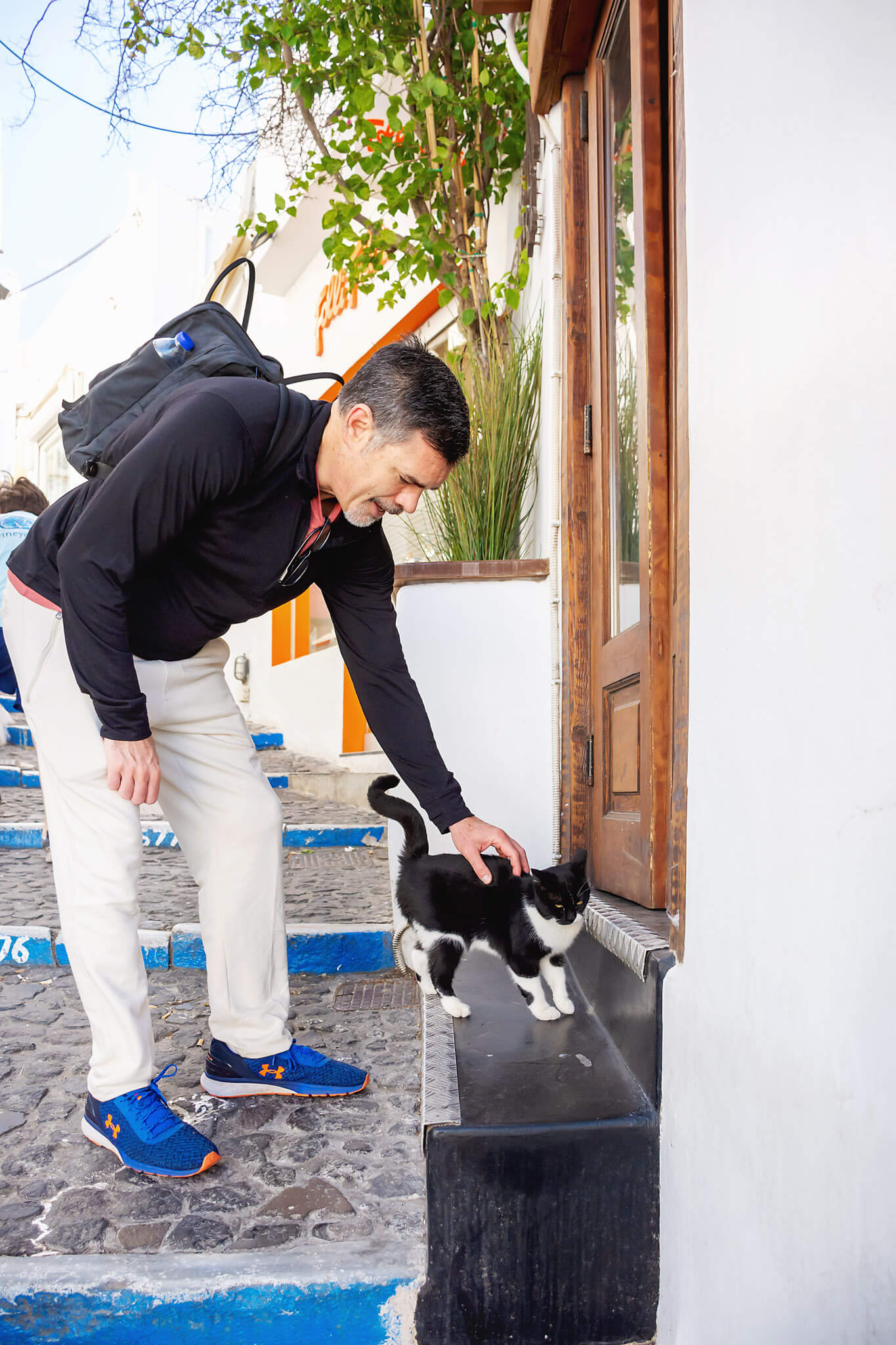
The Greeks sometimes likened their goddess, Artemis, with the mighty Egyptian cat goddess, Bastet. Egyptians depicted Bastet with the head of a cat and a woman’s slender body. Hecate, the goddess of magic, was often accompanied by cats in her role as a protector of the home.
Greek literature contains a few cat-related stories, including tales of Artemis transforming into a cat to evade detection while hunting in the forest.
Aristotle, Plutarch, and Pliny the Elder mention cats in their writing. They associate cats with lecherousness, cleanliness, and lust, respectively. The ancient Greek playwright Aesop even featured a cat in one of his famous fables, emphasizing the animal’s cunning and resourcefulness.
Cats were also considered symbols of good luck. Owning a cat would act as a ward and protect from evil spirits.
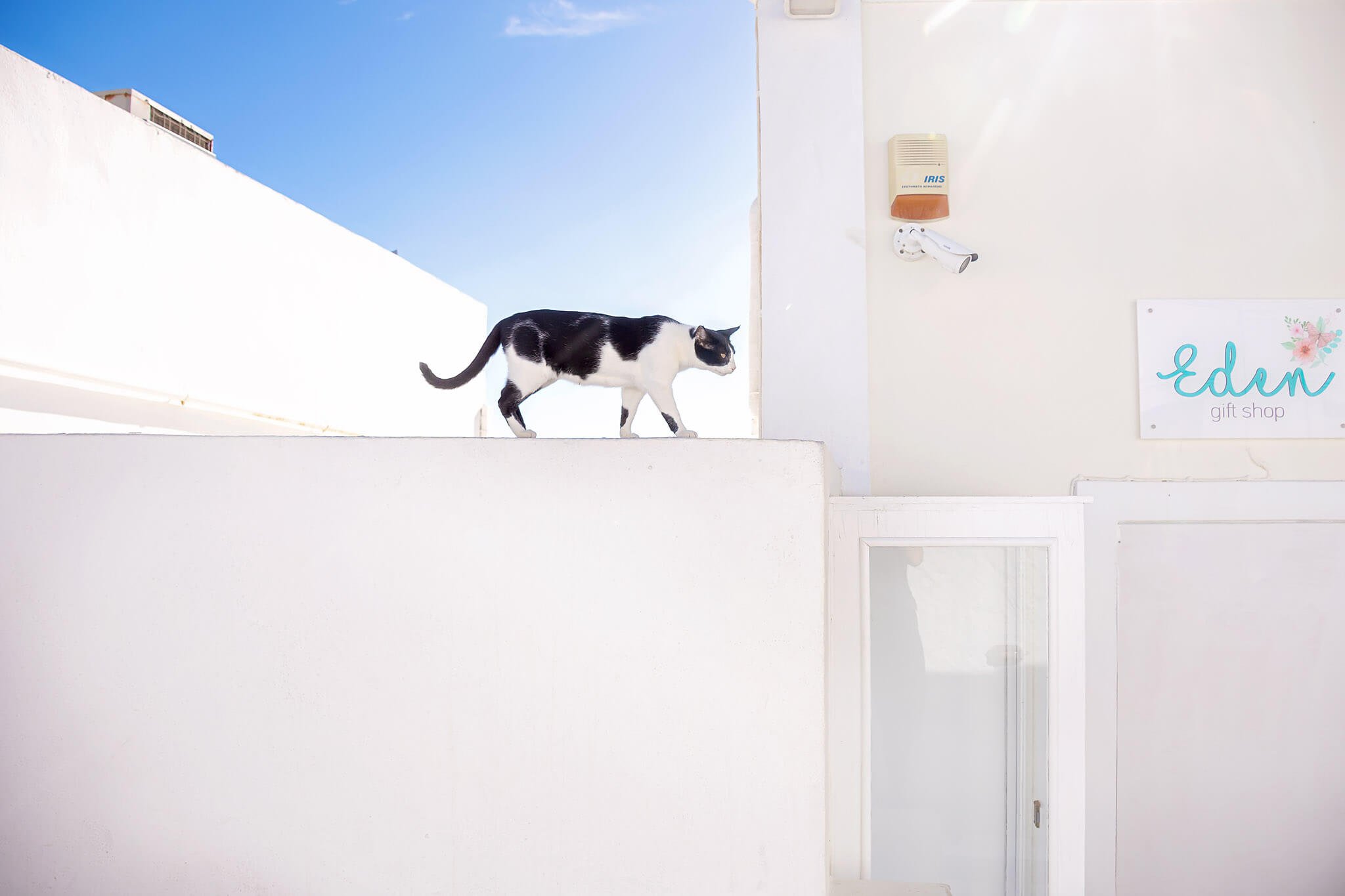
Organizations Helping Cats in Athens
Several organizations are dedicated to helping the feral cats of Athens. These charitable groups focus on rescuing, rehabilitating, and finding homes for these cats. They also promote spaying and neutering to control the population. We actually ran into a group right outside the main gate of the Acropolis on our first afternoon in Athens. They were feeding the cats and knew them all by name!
Some of the most prominent organizations include:
Nine Lives Greece: This volunteer-based group is committed to improving the lives of Athens’ stray cats through rescue, adoption, and population control initiatives.
Greek Cat Care Foundation: A volunteer-based charity working to help the street cats of Greece since the end of 2010.
Friends of the Strays of Greece: A charity dedicated to providing food, shelter, and veterinary care to strays and unwanted dogs and cats in Greece and homing the lucky few.
Greek Cat Welfare Society: This UK-based organization supports the welfare of cats in Greece by providing food, shelter, and medical care, as well as promoting education and awareness.
By supporting these organizations, you can make a difference in their efforts to feed and provide medical care for these animals. If you live abroad and are an overachiever (ha, ha), you can contact these charities for information about adopting a cat. Be prepared for some planning, paperwork, and cost.
But what a fantastic way to leave an impact and win the love of an adoring and exotic pet!
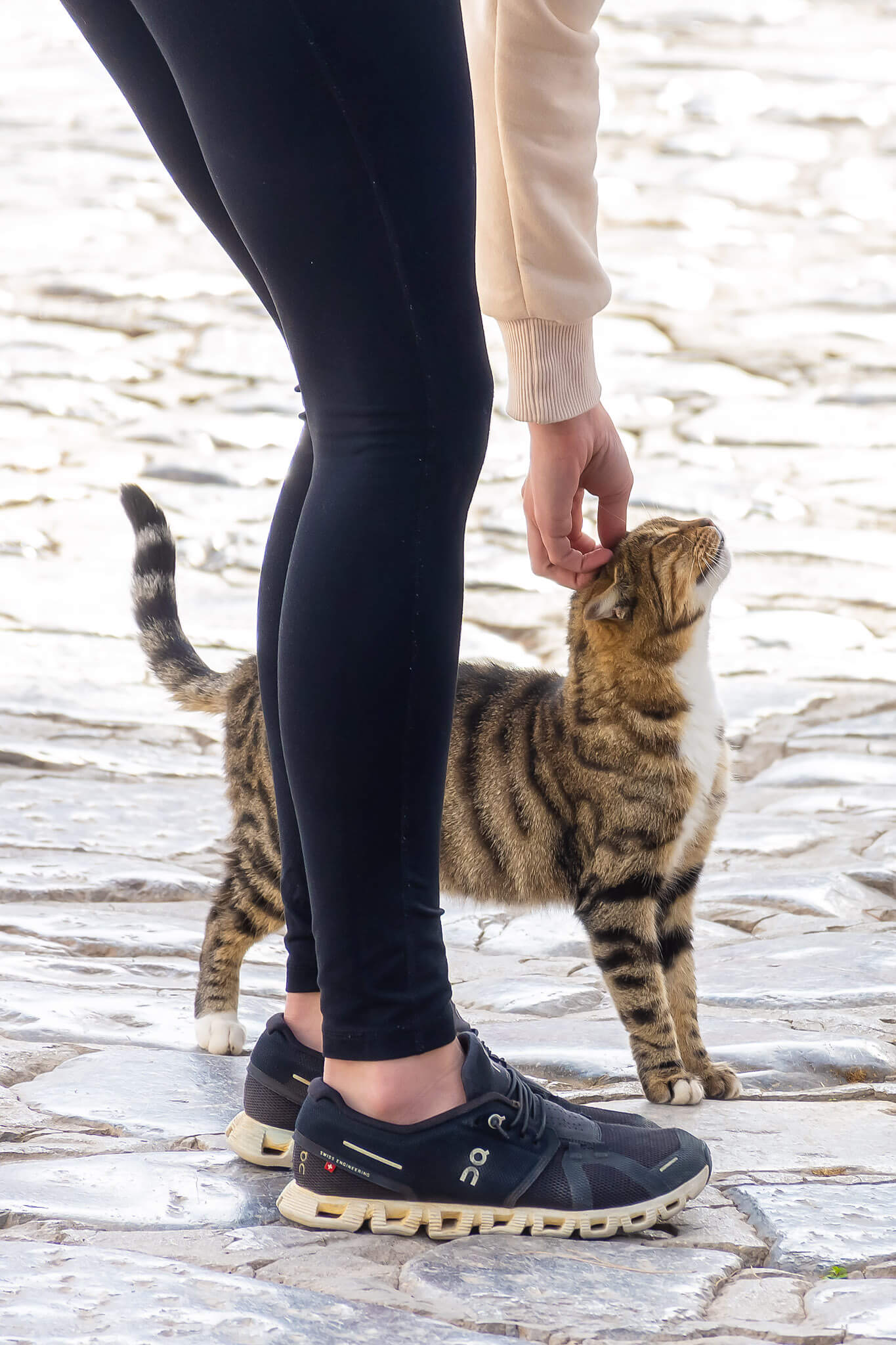
The Future of Cats in Athens
The stray cats of Athens and the surrounding areas have captured the hearts of locals and tourists alike with their friendliness and resilience. Their story is intimately bound with Greece’s, as is their fate.
In some ways, the cats of Athens are like the Parthenon or the Agora. They are visible remnants of ancient history, a long legacy uniting people with the land. They dwell at a confluence where old culture collides with modern demands.
By appreciating these captivating creatures’ history, challenges, and needs, you can contribute to their happiness and ensure they continue thriving as an integral part of Greece’s rich cultural tapestry.
Looking For More Cat-Inspired Content?
Enjoy my blog posts about the Hemingway Cats in Key West and our visit to the KattenKabinet Cat Museum in Amsterdam!
Pin This Cats in Athens Blog Post For Later
